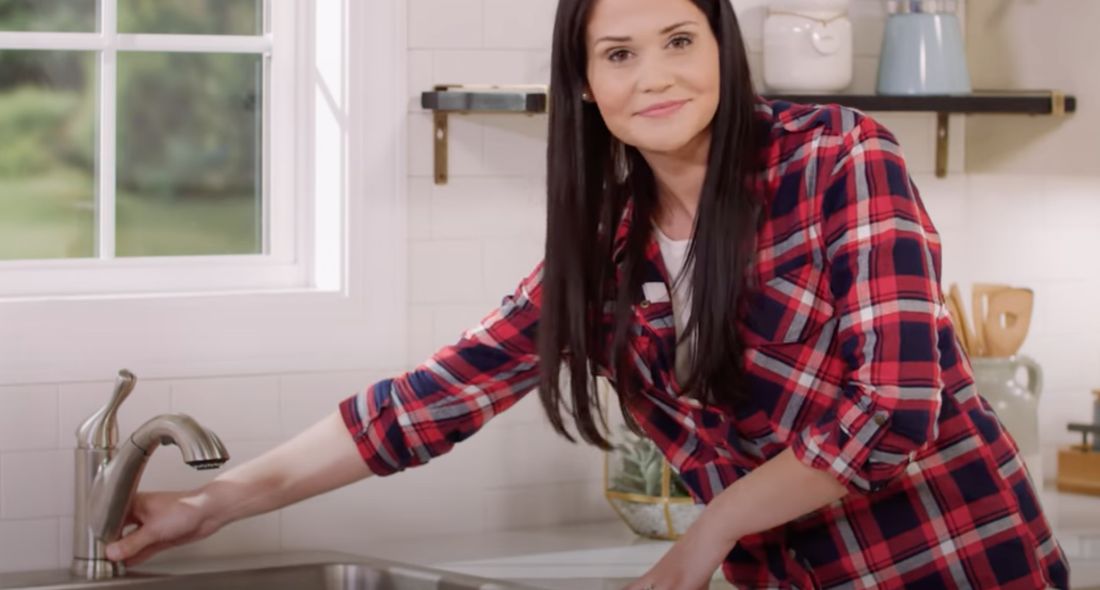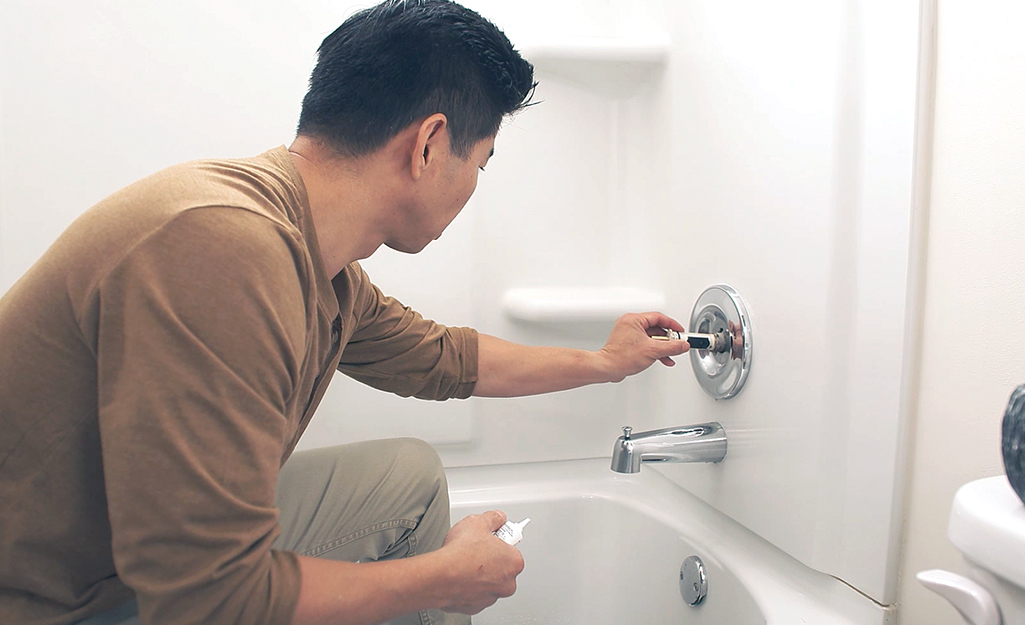Why It's Crucial to Resolve a Malfunctioning Faucet
Why It's Crucial to Resolve a Malfunctioning Faucet
Blog Article
The content on the next paragraphs involving Water Dripping from Faucet: Why and How to Fix is amazingly interesting. You should give it a look.

Leaking taps could feel like a small hassle, but their influence surpasses just the inconvenience of the audio. From drainage to sustaining unnecessary economic expenses and health risks, ignoring a dripping faucet can bring about various consequences. In this article, we'll look into why it's essential to resolve this common house issue promptly and efficiently.
Wastefulness of Water
Environmental Influence
Trickling faucets contribute substantially to water waste. According to the Epa (EPA), a single faucet trickling at one drip per second can lose more than 3,000 gallons of water each year. This not only stress water resources yet also influences ecological communities and wildlife dependent on them.
Financial Costs
Boosted Water Expenses
Past the environmental effect, trickling faucets can blow up water expenses substantially. The accumulated wastefulness with time converts into higher energy expenditures, which can have been stayed clear of with timely repair services.
Possible Building Damages
Moreover, extended leaking can bring about damage to fixtures and surface areas bordering the tap. Water accumulation can trigger discoloration, deterioration, and also structural problems if left ignored, leading to added repair service prices.
Wellness Worries
Mold And Mildew and Mold Development
The constant presence of dampness from a leaking tap creates a perfect setting for mold and mildew and mildew growth. These fungis not only jeopardize indoor air top quality yet additionally pose health and wellness threats, particularly for people with respiratory conditions or allergic reactions.
Waterborne Diseases
Stagnant water in leaking faucets can come to be a breeding place for microorganisms and other virus, increasing the threat of waterborne conditions. Impurities such as Legionella germs grow in stagnant water, potentially resulting in serious ailments when consumed or inhaled.
DIY vs. Professional Repair service
Advantages and disadvantages of Do It Yourself Repair Work
While some may try to take care of a trickling tap themselves, do it yourself repair services include their own collection of difficulties. Without appropriate knowledge and tools, DIY attempts can exacerbate the problem or result in insufficient repair services, prolonging the problem.
Benefits of Working With an Expert Plumber
Working with a professional plumber ensures that the underlying reason for the trickling faucet is attended to efficiently. Plumbers possess the proficiency and devices to diagnose and fix faucet concerns successfully, conserving time and lessening the threat of more damage.
Step-by-Step Overview to Repairing a Dripping Faucet
Devices Needed
Before trying to take care of a dripping faucet, gather the necessary devices, including an adjustable wrench, screwdrivers, replacement parts (such as washers or cartridges), and plumber's tape.
Common Faucet Issues and Their Solutions
Determine the sort of faucet and the details concern creating the drip. Usual problems consist of damaged washers, rusty valve seats, or faulty O-rings. Refer to producer instructions or online tutorials for step-by-step support on repairs.
Safety nets
Normal Maintenance Tips
To prevent trickling faucets, carry out regular maintenance such as cleaning up aerators, evaluating for leaks, and replacing damaged parts without delay. In addition, consider installing water-saving devices or upgrading to a lot more reliable components.
Significance of Prompt Repairs
Resolving leaking faucets as soon as they're noticed stops further water wastefulness and possible damage, inevitably saving both water and money over time.
Effect On Building Value
Assumption of Well-Maintained Residential Property
Preserving a residential or commercial property in good condition, consisting of dealing with upkeep problems like trickling taps, enhances its perceived value and desirability among prospective purchasers or renters.
Impact on Resale Worth
Residences with properly maintained plumbing fixtures, including taps, command higher resale values in the real estate market. Resolving trickling taps can add to a positive impression throughout residential property assessments and arrangements.
Environmental Responsibility
Specific Payment to Conservation
Taking responsibility for dealing with trickling taps aligns with broader initiatives toward water preservation and ecological sustainability. Every person's actions collectively make a significant impact on protecting precious resources.
Lasting Living Practices
By focusing on timely repair work and embracing water-saving habits, people contribute to lasting living practices that profit both existing and future generations.
Final thought
Dealing with a dripping faucet exceeds simple ease; it's a vital action toward conserving water, reducing monetary costs, and protecting health and wellness and property. Whether with do it yourself repair work or specialist aid, taking action to fix leaking faucets is a small yet impactful method to promote responsible stewardship of resources and contribute to a healthier, extra sustainable future.
How to Fix a Dripping or Leaky Faucet
A leaking faucet is one of the most common problems that homeowners encounter, but it being commonplace doesn’t make it any less annoying. The constant drip drip drip of a leaking bathtub faucet, showerhead, or sink tap can disturb your home’s serenity. Left neglected, a dripping faucet can also result in higher water bills and discoloration or mold growth in your sink or plumbing fixtures.
Fortunately, you don’t have to be a trained plumber to know how to stop a dripping faucet. With some basic tools, replacement parts, and a little patience, leaky faucet repair is a breeze. In this article, we’ll explain what causes dripping faucets and how you can fix them.
What Causes a Leaking Faucet?
Kitchen and bathroom faucets come in all manner of designs, but most involve some combination of valves, O-rings, seals, and washers. The O-ring is usually the weakest link, but any one of these pieces can wear down over time. Heat, moisture, temperature fluctuations, minerals, mold, and movement can contribute to warping and corrosion, breaking the watertight seal. This just comes with the territory of being a homeowner. Everything is always subject to wear and tear, and some component parts of your appliances and fixtures need to be replaced on occasion. At least replacement O-rings are cheap!
More rarely, dripping faucets can be a symptom of excessively high water pressure. Were this the case in your home, you would probably notice that the leak is not isolated to one faucet. Water pressure issues are harder to resolve on your own. We recommend contacting a professional plumber if you suspect your water pressure is too high.
How to Fix a Dripping Faucet
Pipe wrench or monkey wrench Allen wrench set Screwdrivers Old towel or rag Shut off the water.
Before you do anything, you need to turn off the water to keep from drenching your kitchen or bathroom. You should find a valve under the sink and against the wall. Once you’ve turned this valve, try turning the faucet on to confirm that the water source has been cut off.
If you can’t locate your local valve for the faucet you’re working on, you can always shut off the water to the house at the main valve. Of course, this will prohibit anyone from using the sinks, showers, or toilets while you’re working on the faucet that’s giving you trouble.
Plug or block the drain.
You’ll be disassembling the faucet and removing some small bits of hardware. Plug the drain with a stopper or rag to avoid the possibility of a small screw falling into your P-trap.
Take apart the faucet assembly.
There are several varieties of kitchen and bathroom faucets, each with its own manner of assembly. For detailed instructions on how to disassemble your faucet, you can refer to the fixture’s manual or contact the manufacturer. If you know whether you have a ball, disc, cartridge, or compression faucet, you can find detailed schematics online.
In general, you need to begin by removing the faucet handles. You might notice a small screw that you’ll need to remove with a screwdriver or Allen wrench. If you don’t see any visible securing hardware, it’s likely hidden under a decorative cap that can be unscrewed or popped off with flathead screwdriver.
Remove each piece methodically, consulting a schematic when necessary. Take notes or arrange the pieces in such a way to make it easier to correctly reassemble the faucet later.
Remove the cartridge.
Once you’ve removed the handles and securing hardware, you should be able to remove the valve cartridge or stem. Some cartridges will slide right out. Other faucet models will require you to loosen a nut with a pipe wrench before you can remove the valve stem.
Examine the exposed hardware.
With the cartridge or stem removed, inspect the component parts. Check the rubber O-rings for wear and tear. Also examine the seat washer for corrosion or other damage. These pieces are usually the responsible parties for a dripping faucet, but it’s worth inspecting the other component parts while you have the faucet disassembled.
Find replacement parts.
Once you’ve identified which faucet component has failed, find an identical replacement. Your local hardware store should have O-rings, seat washers, and other standard components in stock. If you have a luxury or uncommon faucet, you may have to contact the manufacturer for a replacement part.
It’s a good idea to take your old parts with you to the hardware store so you can compare them with the store’s inventory and be sure you’re purchasing the correct replacement.
Reassemble the faucet.
With your new parts in hand, reconstruct the faucet and handles. Don’t be tempted to overtighten screws or nuts. You might think this could create a better seal, but it can instead damage or bend a delicate part of the assembly and create a new problem for you.
Turn on the water and test the faucet.
The only thing left to do is test your work. Unplug the sink, turn the water back on, and try the faucet. Congratulate yourself on a job well done!
https://www.libertyhomeguard.com/how-to-fix-a-dripping-or-leaky-faucet/

I found that page on 4 Common Reasons for a Leaky Faucet while exploring the internet. Do you know about anybody else who is truly interested in the topic? Do not hesitate to promote it. Thanks a lot for taking the time to read it.
Report this page